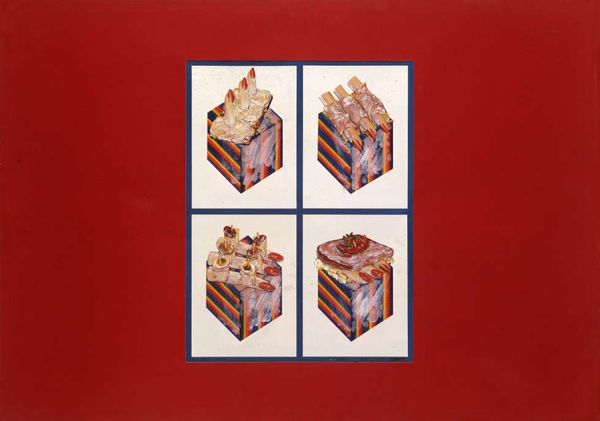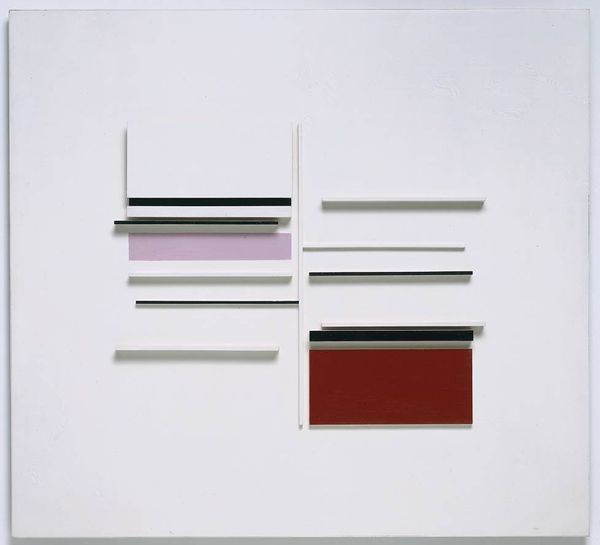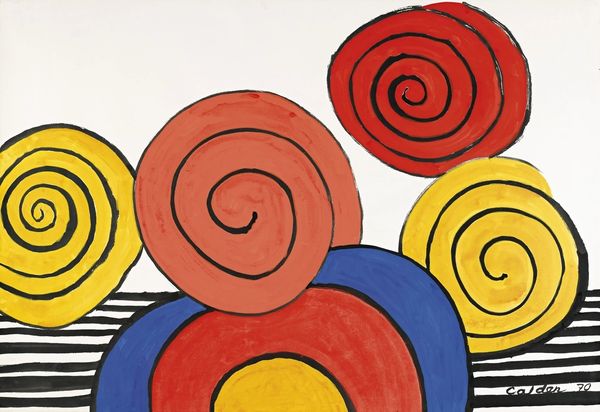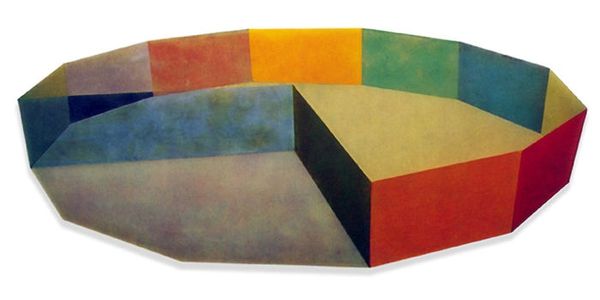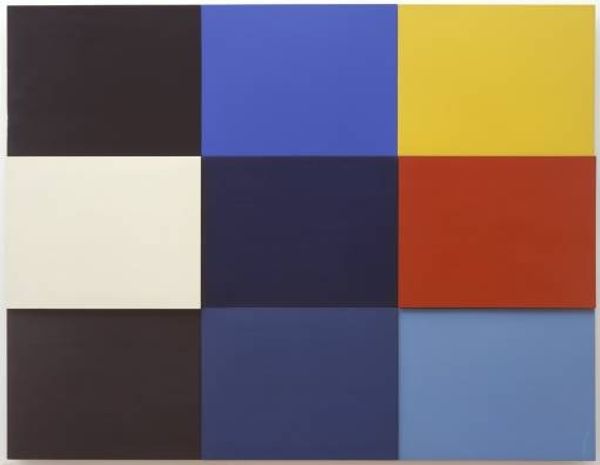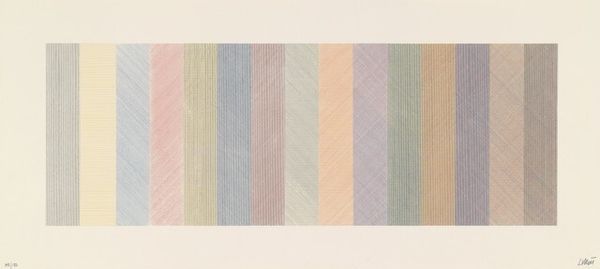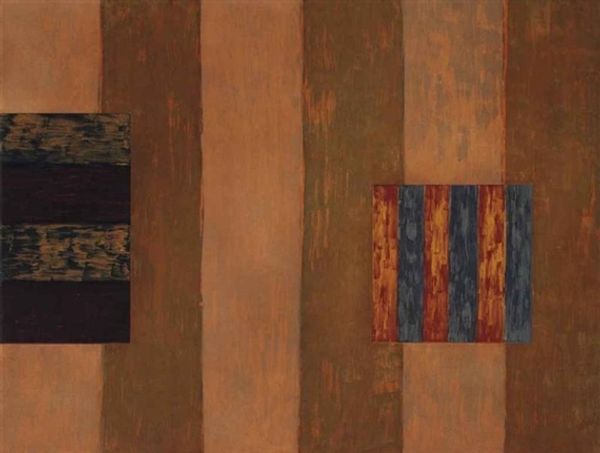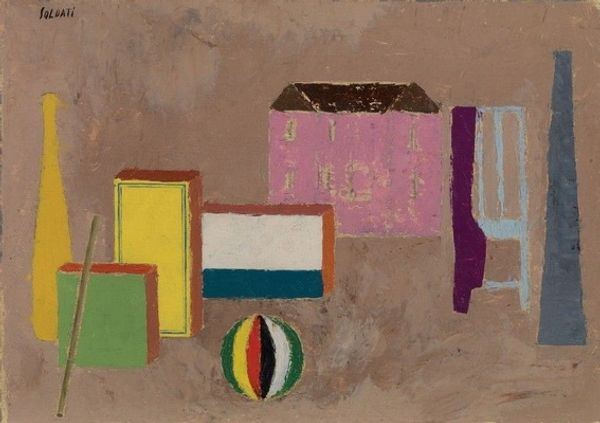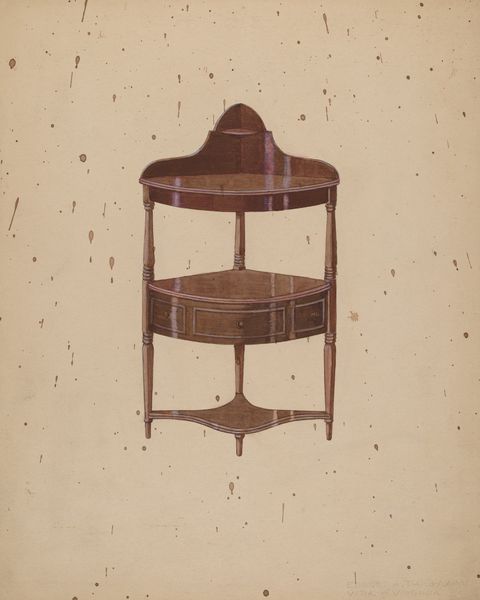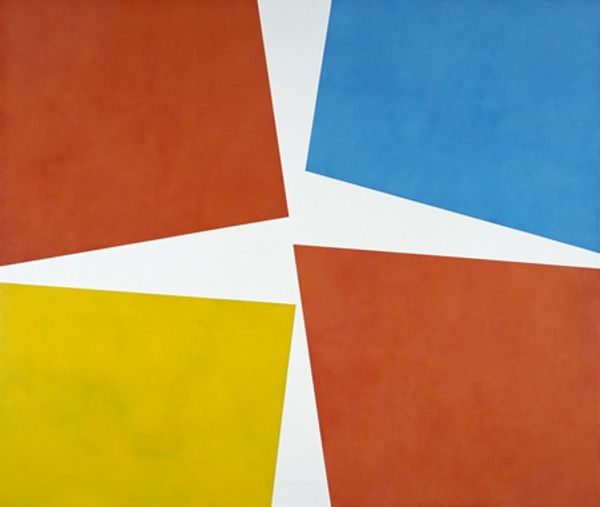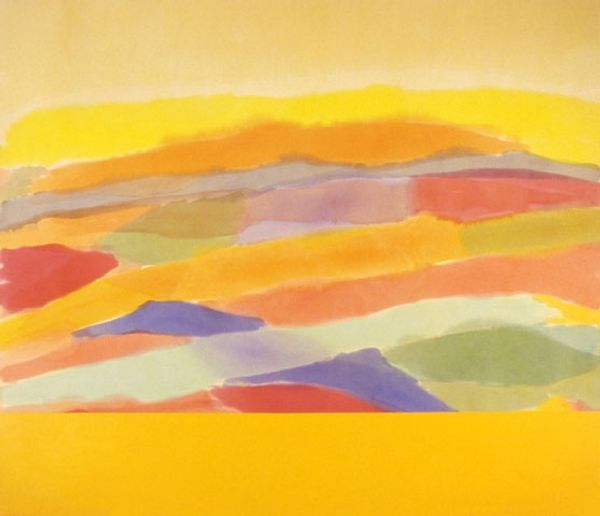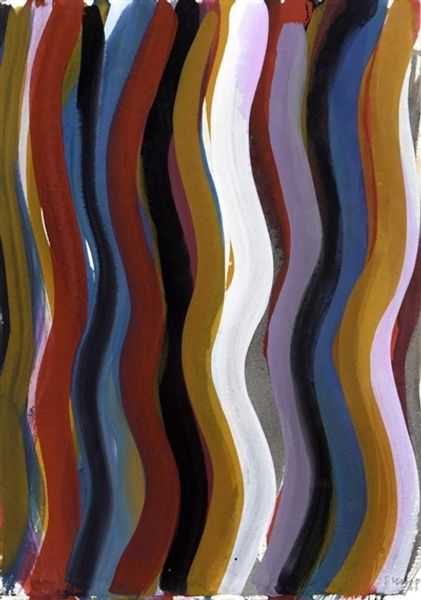
painting, oil-paint
#
painting
#
oil-paint
#
bay-area-figurative-movement
#
pop-art
#
watercolour illustration
#
modernism
#
watercolor
#
realism
Dimensions: 71.12 x 96.52 cm
Copyright: Wayne Thiebaud,Fair Use
Editor: Wayne Thiebaud’s "Display Cakes," painted in 1963, presents these three, almost cartoonishly perfect cakes, rendered in thick, creamy oil paint. There’s something unsettling about how idealized they are, like a Norman Rockwell painting with a slightly sinister edge. How do you interpret this work? Curator: That sense of unease is key. Thiebaud painted these mass-produced desserts during the rise of consumer culture in America. These cakes aren't just treats; they're symbols of post-war American abundance and the societal pressure to conform to certain ideals, especially for women in the domestic sphere. The overly neat presentation, the almost artificial colours, reflect a manufactured idea of perfection. Does that resonate with you at all? Editor: It does, particularly that point about the manufactured idea of perfection. It's almost like he's critiquing the performative nature of the idealized American dream. But do you think there’s also an element of genuine appreciation for these objects, even if they're mass-produced? Curator: Absolutely. There’s a tension in Pop Art, and in Thiebaud’s work specifically, between critique and celebration. He highlights the seductive appeal of these objects while simultaneously questioning their cultural significance and their role in shaping our desires. He gives us pause to reconsider our relationship with the things we consume. The shadows add a particularly unsettling element too, no? They’re so solid they compete with the cakes themselves. Editor: That's a great point about the tension. I hadn’t really considered that. It’s less about a straightforward condemnation and more about a complex engagement with consumer culture. Curator: Precisely. It’s about unveiling the layers beneath the glossy surface and starting a dialogue about how we internalize these images. What did you think about it beforehand, and what has changed after our conversation? Editor: I initially saw it as just a nice painting of cakes. Now, I see a commentary on consumerism, gender roles, and the construction of the American Dream. It definitely broadened my understanding of the artist and the era.
Comments
No comments
Be the first to comment and join the conversation on the ultimate creative platform.
